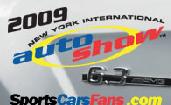Audi working on cutting CO2 emission

For Audi engineers from the "Electronic Research Laboratory" (ERL) in California, vehicle-to-vehicle networks are a major step towards reducing fuel consumption and carbon dioxide emissions.
At the LA Auto Show, Ralph Weyler, Member of the Board of Management for Marketing and Sales at AUDI AG, explained to California’s Governor Arnold Schwarzenegger how Audi will contribute to reducing CO2 emissions over the coming years. At the Governor’s press conference he presented products including an Audi A5 that runs on E85 – a fuel consisting of 85 percent ethanol and 15 percent conventional petrol. Governor Schwarzenegger visited the Audi stand and also took a seat in the concept car Audi Cross Cabriolet quattro, which is powered by the cleanest diesel engine in the world, a 3-litre TDI with the ultra low emission system.
Audi also has an active interest in traffic optimisation. As Mr Weyler commented, "In this field we are cooperating with three Californian universities on six research projects." The prestigious institutes California at Berkeley, California at Riverside and Stanford are involved in these projects.
The objective is to achieve additional reductions in CO2 emissions through intelligent interactions between the driver and the vehicle, between vehicles on the road, and throughout the entire traffic in circulation. The name of the project is "Clean Air, a Viable Planet".
Daniel Rosario, Head of the "Connectivity and Computing" Department in Palo Alto, stresses that the shortest route does not necessary offer the lowest fuel consumption. "The path between two points can be measured in terms of its distance, but also in terms of the quantity of carbon dioxide emitted by our cars. Information transmitted between vehicles in a network allows the driver to choose the route that indicates the lowest CO2 emissions."
The technology to create vehicle-to-vehicle networks already exists. Now it is up to researchers and engineers to integrate this technology into what Rosario calls an "intelligent vehicle network". As he goes on to explain, "Driver behaviour can increase fuel efficiency by up to 20 percent. Our approach could achieve 20 percent on top of that."















